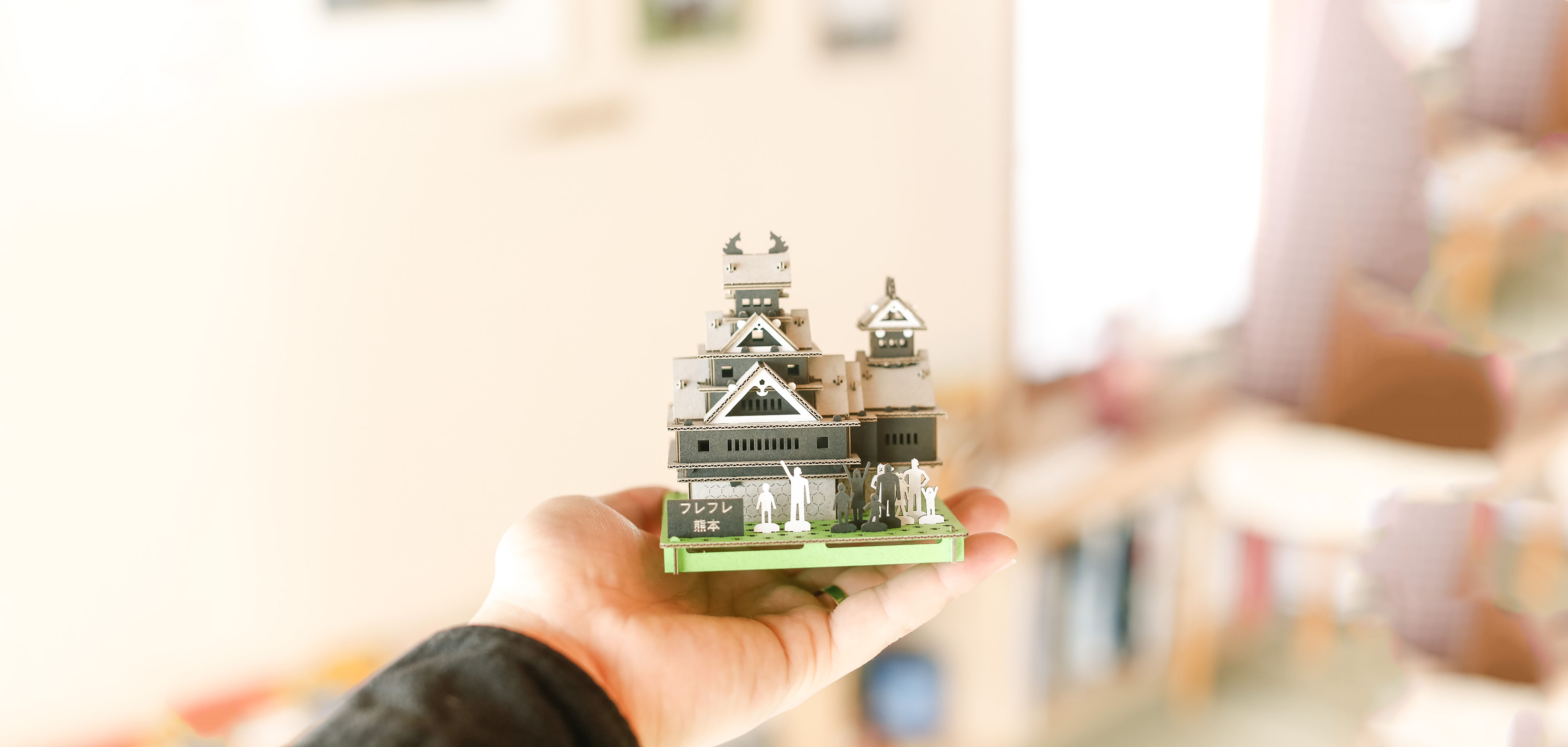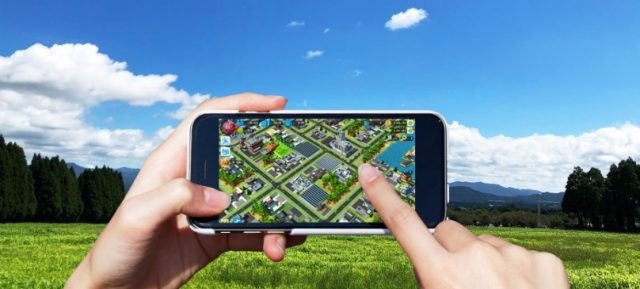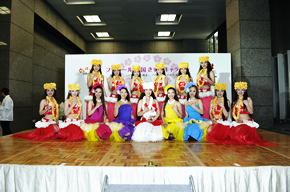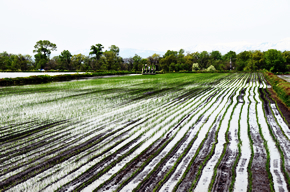
- Expertise
BtoB
CSV/CSR/SDGs/Diversity & Inclusion
Case film
Problem
The initiative was conducted for Toyama Prefecture-based packaging company Sakura Paxx. Following the Great East Japan Earthquake and Tsunami of 2011, Sakura Paxx found that its contributions to the relief effort provided the impetus to reassess its corporate ethos and implement organizational reforms. In April 2016 disaster struck again, as a series of powerful earthquakes rocked Kumamoto Prefecture on Japan’s western Island of Kyushu. The disaster left 204 dead and 2,671 seriously injured, also causing widespread devastation to buildings and infrastructure, including the historic Kumamoto Castle. Seen as an important symbol for the recovery of the region as a whole, the restoration of this iconic local landmark is expected to take as long as 20 years to complete, at an estimated cost of 63.4 billion yen. This initiative aimed to utilize expertise gained from the packaging business to provide ongoing support for the restoration of Kumamoto Castle and ensure that recovery in Kumamoto is not forgotten, as measured by the money raised for the project as well as the time dedicated to it by members of the public.
Research
The first step in determining the approach for this initiative was a survey into media coverage of the earthquake, its aftermath, and the reconstruction effort. Reported comments from Mayor of Kumamoto Kazufumi Onishi (“To the people of Kumamoto, Kumamoto Castle is an emotional ballast. Its reconstruction is symbolic of the region’s recovery.”), Prime Minister Shinzo Abe (“Without the restoration of Kumamoto Castle, the region’s recovery would be incomplete.”) and others highlighted the status of Kumamoto Castle as a vital emblem of the region’s broader recovery. Other reports pointed to the huge investment of time (20 years) and money (over 63 billion yen [USD 574 million]) that the monument’s restoration was expected to require, while major donations and fundraising efforts also attracted significant coverage.
This was followed up by a survey of Kumamoto residents, to secure perspectives not typically available via the mass media. These revealed that while local people were extremely grateful for the donations and coverage received, they felt there was still a long way to go for the recovery of both the castle and the region as a whole, and anxious that, as coverage dried up, people across Japan would incorrectly assume that things in Kumamoto were already back to normal.
These results became the basis of a two-pronged strategy, that aimed to: 1.) give people a sense of the time required for the restoration of Kumamoto Castle (and by extension the wider region) through the process of assembling their own cardboard models of this famous local landmark; and 2.) create a framework that would encourage lasting awareness and support rather than allowing contributors to become complacent about the challenges ahead after making a one-off donation.
Planning detail
This campaign leveraged the unique expertise of Sakura Paxx, a cardboard and packaging specialist, in a CSR initiative designed to keep recovery efforts alive in the public consciousness and generate a lasting source of funding for the restoration of Kumamoto Castle. Though the one-year anniversary of the Kumamoto Earthquakes brought renewed media attention and boosted donations, extensive coverage of donations could lead the public to wrongly assume that the work is already complete and contributions are no longer needed. Therefore, two key objectives of this initiative were to attract active participation and inspire sustained engagement from members of the public.
The strategy was to utilize the manufacturing capabilities of Sakura Paxx to produce cardboard model kits of Kumamoto Castle for sale, with 100% of proceeds to be donated to the castle’s restoration. It was hoped that taking the time to assemble the scale model of the castle would encourage buyers to take a heightened interest in its restoration, a connection which would then be reinforced on a day-to-day basis as models were displayed in the home or office. Over and above a purely monetary contribution, the castle models would thus serve as a means of channeling donors’ time and empathy to help power recovery efforts. Meanwhile, the visibility of the cardboard castles in people’s everyday environments and in the media would help spread the message to an ever larger population, ensuring that restoration efforts in Kumamoto remain near the forefront of the public consciousness.
Execution
Sakura Paxx produced an initial run of 3,000 kits for building scale models of Kumamoto Castle. Packaged with an attractive design featuring a photograph of Kumamoto Castle, the model kits were designed so that they could be built by a wide range of ages from children to adults, with an average assembly time of 37 minutes. The act of purchasing and assembling the model and then using it as an ornament in the home or office was framed as a “Build-your-own donation” to the restoration of Kumamoto Castle. A promotional video was also prepared which challenged viewers to discover how much time they would need to complete a model and illustrated how the accumulated time, effort, and compassion of everyone who built cardboard castles would sustain the actual restoration work over the many years needed to complete it.
In addition to being sold online, the models were featured at a charity event for the general public held at Tokyo’s Roppongi Hills retail complex. The promo video and footage from the event were shared online, and all materials were presented to various media in a freely editable format in order to stimulate steady coverage that extended beyond the April 2017 launch and charity event. Aside from one local newspaper advertisement in Toyama Prefecture, where Sakura Paxx is based, the campaign chose to forgo conventional advertising in favor of earned, owned, and shared media.
Outcome
Exposure in the media was an important means of spreading general knowledge about and interest in the initiative. The strength of the cardboard model kit concept helped to secure coverage in several news media, getting a further boost when the models won a prestigious top 100 placement in the 2017 Good Design Awards. The initiative also inspired various offshoot activities which in turn provided ongoing exposure. One such activity was a partnership with Solaseed Air, a Kyushu-based budget airline, which teamed up with Sakura Paxx to offer the model kits for sale onboard its flights. A press release issued by the airline in February 2018—nearly a year after the campaign’s launch—generated mentions in major news outlets including the Nikkei newspaper.
The models themselves met with overwhelming demand. The initial run of 3,000 units sold out so quickly that production had to be increased, and as of March 2018, 6,000 kits have been purchased by buyers in Japan and 10 other countries. The initiative has generated approximately 11 million yen so far, representing some 3,700 hours contributed to the rebuilding effort by members of the public. Social media engagement also continues to grow, with related videos published as distributed content surpassing one million views and garnering overwhelmingly positive comments. One tweet about the initiative from the mayor of Kumamoto inspired over 1,500 reactions.
The project has also boosted the profile of Sakura Paxx and brought benefits to the business. In 2017, the company received twice the usual number of applications for graduate positions from final-year university students. Unusually for a local BtoB company, Sakura Paxx has received offers of collaboration from 20 businesses and organizations, as well as five requests for public speaking appearances by the company president. These positive outcomes indicate how well the initiative matched with the capabilities and the socially responsible ethos of the company, helping to cement its reputation as a business which acts for the well-being of local communities and society at large.



